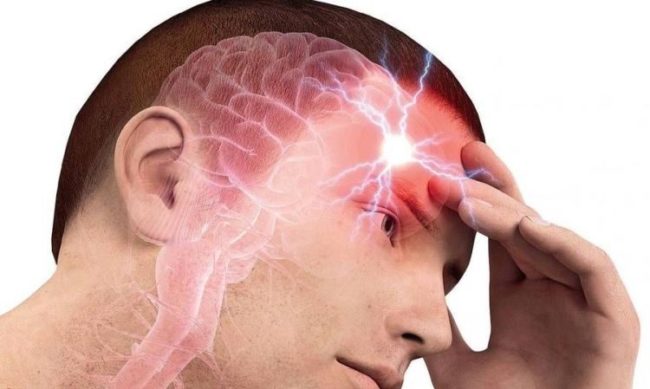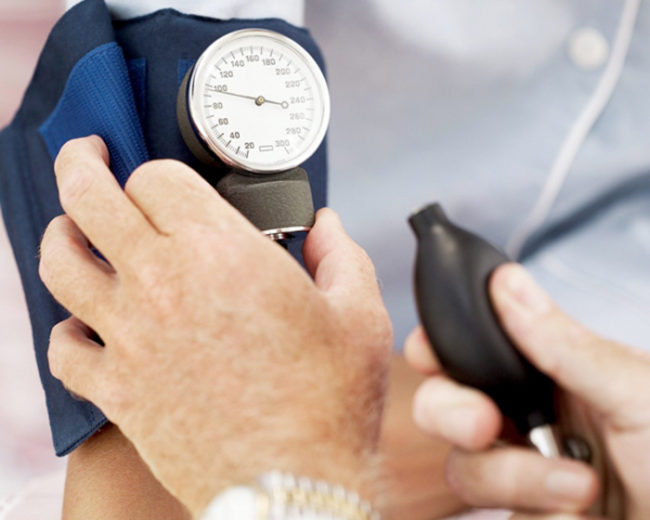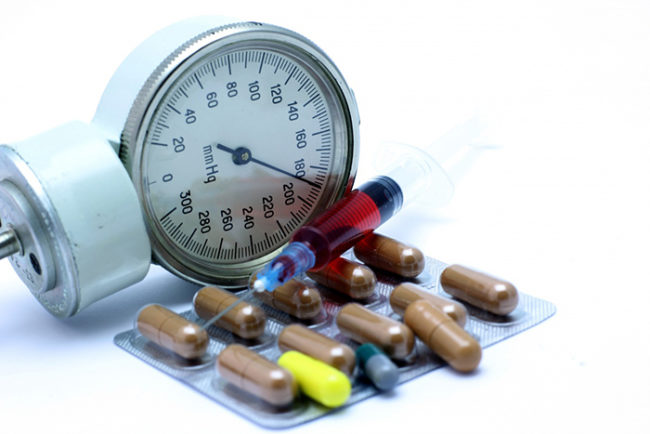Vegeto-vascular dystonia is one of the most common diseases associated with disorders in the vascular system of the human body. Symptoms and causes of its manifestation are described even in many medical textbooks on neurology. However, today there are many myths and disputes regarding the occurrence of this disease that force scientists and doctors to doubt the appropriateness of such a name and diagnosis.
Content
- Vegeto-vascular dystonia-what is it
- Types of vegetative-vascular dystonia
- The causes of vegetative-vascular dystonia
- Symptoms of vegetative-vascular dystonia
- The main methods of diagnosing vegetative-vascular dystonia
- How to treat vegetative-vascular dystonia
- Features of vegetative-vascular dystonia in children
- Features of vegetative-vascular dystonia in pregnant women
Vegeto-vascular dystonia can manifest itself in both children and adults. According to statistical data, approximately 70% of those who treated similar symptoms diagnose attacks of vegetative-vascular dystonia, and in children such diseases manifest in 25%. In simple words, vegetative-vascular dystonia is a failure in the balance of two vegetative parts of the human nervous system.
In this article, we consider the symptoms and signs of vegetative-vascular dystonia, methods for diagnosing this disease and the main methods of treating vegetative-vascular dystonia in adults and children.
Vegeto-vascular dystonia-what is it
Among scientists and doctors there is often such a joke that in Soviet times, with a variety of complaints, one diagnosis was made-acute respiratory infections, in modern medicine the same thing happens, only the letters of the diagnosis are completely different-VSD or vegetative-vascular dystonia. According to statistics conducted by medical institutions, it is 70-75% of the therapist’s appeals that end in the production of just such a diagnosis. Vegeto-vascular dystonia in adults and children is one of the most common diseases in Russia, about 8 out of 10 residents of the country are not aware of this disease.
Vegeto-vascular dystonia is a violation in the work of the vascular system of the human body, which lead to insufficient supply of all organs of tissue with oxygen. It is worth noting that in modern medicine the syndrome of vegetative-vascular dystonia is not considered as a separate disease, but is considered a combination of various symptoms of disorders of the internal organs of a person, which are associated with temporary disorders of their nervous regulation. At its core, the meaning of the diagnosis of vegetative-vascular dystonia lies in various failures of the autonomic nervous system of a person. The work of all internal organs is coordinated precisely by the peripheral nervous system, which, in turn, consists of two parts - a sympathetic nervous system and parasympathetic. These two systems affect the organs and other systems of the human body opposite, for example, the sympathetic nervous system accelerates the heartbeat, and parasympathetic, on the contrary, slows down. If both systems are in equilibrium, the organs work without disorders and no symptoms of the disease are manifested. With bouts of vegetative-vascular dystonia, there is a violation of this balance and the predominance of one of the systems.
To date, disputes about whether this disease actually exists or is it just a myth. From the moment of mention of VSD, this complex of symptoms has changed its name many times. Often you can find the following definitions: autonomic dysfunction, angiourosis, psycho -vegetative neurosis, vasomotor dystonia. Now it is customary to denote this disease as neurocirculatory dystonia, but many doctors and patients are still operating with an outdated Soviet name.

Types of vegetative-vascular dystonia
Today in medicine there are several classifications of vegetative-vascular dystonia, which are characterized by various features and severity of the course of the disease. Consider the most popular types of VSD.
Types of VSD in the nature of the course:
- The paroxysmal type of vegetative-vascular dystonia. It is a manifestation of attacks or crises of vegetative-vascular dystonia. With this form, the symptoms of vegetative-vascular dystonia appear quite rarely with a visible good state of health. Any stress, mental or nervous disorder, fatigue and overwork can provoke a crisis.
- Permanent or constant type of VSD. It is a constantly leaking disease that requires regular treatment with vegetative-vascular dystonia. In the process of the disease, there are no jumps or crises, and there are no periods of alleviation of symptoms.
- Mixed type of VSD. This form of the disease includes a paroxysmal type and permanent.
- Latent type of vegetative-vascular dystonia. In this case, the disease is practically not manifested, the appearance of some weak symptoms that the patient practically pays attention to.
Types of vegetative-vascular dystonia depending on the reaction of the cardiovascular system of the human body:
- The cardiac type of vegetative-vascular dystonia. With this form of the disease, patients most often experience acute or stupid pains in the heart or chest. A rapid heartbeat and accelerated pulse, increased pressure and bouts of anxiety are also manifested. Such pains do not pass when taking tablets from angina pectoris.
- Tahicardial type of VSD. Patients with this type of disease suffer from increased pressure. The pulse frequency is observed up to 160 shocks for a minute, vibration vascular and a knock of blood to the temples.
- Hypertonic type of vegetative-vascular dystonia. This form of the disease is characterized by temporary jumps in blood pressure, which does not increase above 170.
- The visceral type of vegetative-vascular dystonia. This form of VSD is accompanied by problems with the gastrointestinal tract. Often, severe abdominal pain, bloating. Disorders in the work of the intestines may be observed, which are expressed in diarrhea or constipation.
- Hypotonic type of VSD. It is characterized by a temporary decrease in pressure, up to about 90/60, sometimes below. In patients, the temperature of the arms and legs may decrease, sweating increases.
- Asthenic type of vegetative-vascular dystonia. This course of the disease is characterized by a sharp decrease in endurance, body temperature may increase and trembling in the hands may increase.
- Respiratory type of VSD. With this type, violations of the respiratory tract are observed. Patients may have pressing chest pain and difficulty breathing, yawning and dry cough.
- Mixed form of vegetative-vascular dystonia. With this form of the disease, a combination of various types of disease is observed.
Types of vegetative-vascular dystonia according to the prevalence of disorders:
- Generalized VSD. With this form of the disease, symptoms affect several human body systems.
- System vegetative-vascular dystonia. In this case, the disease affects only one body system.
- Local form of VSD. Local manifestation of symptoms.

The causes of vegetative-vascular dystonia
Vegeto-vascular dystonia in men and women can appear for various reasons that sometimes do not indicate this disease. Consider the most basic causes and factors that cause a set of symptoms of vegetative-vascular dystonia.
- The cause of the symptoms of VSD are various diseases of the gastrointestinal tract, during which toxins are produced that violate the work of two types of autonomic nervous system. Such diseases include: liver pathology, malfunctions of the gallbladder and urinary tract, impaired intestinal microflora, gastritis, ulcers, colitis, ulcer.
- Vegeto-vascular dystonia can manifest in diseases of the nervous system, especially for diseases of the hypothalamus, limbic system.
- The cause may also be infectious and colds, during which the human immunity is weakened. Due to the fatigue of the body, symptoms of vegetative-vascular dystonia may be mistakenly manifested.
- Very often the cause of vegetative-vascular dystonia can be stresses, as well as poor nutrition. In this case, the human nervous system may suffer, which, in turn, violates the mechanisms of its adaptation to negative effects.
- The reason for the occurrence of vegetative-vascular dystonia can be a sedentary lifestyle, sitting work. All this leads to the appearance of excess weight, which negatively affects the musculoskeletal system and the cardiovascular system.
- Headaches with vegetative-vascular dystonia can appear with nervous and mental disorders that provoke depression, irritability, excitability. These factors lead to the manifestation of symptoms of vegetative-vascular dystonia.
- Emotional, mental or physical fatigue and overstrain can lead to the appearance of symptoms of vegetative-vascular dystonia.
- Vegeto-vascular dystonia in adolescents, symptoms of vegetative-vascular dystonia in women, especially during pregnancy, can manifest due to hormonal restructuring in the body.
- A frequent cause of the appearance of VVD can be sharp changes in the place of residence or climate.
- Endocrine disease, such as diabetes mellitus, hormonal malfunctions.
- Allergies can also cause vegetative-vascular dystonia. It is proved that with a frequent manifestation of allergic reactions, the risk of symptoms of VSD increases.
- Genetic factors may affect the appearance of vegetative-vascular dystonia. There are some pathologies whose occurrence provokes symptoms.
- The abuse of alcohol and smoking is a rather serious factor provoking the disease of vegeto-vascular dystonia. Therefore, it is always recommended to quit and smoke before the treatment of this disease.

Symptoms of vegetative-vascular dystonia
Symptoms of vegetative-vascular dystonia in women, men and children may vary. In this case, the totality of symptoms in this disease will depend on a specific type of VSD. It is important to conduct an examination in time, since some symptoms can be signs of more serious diseases that need to be treated immediately. Here is a description of the most common symptoms of vegetative-vascular dystonia.
- One of the main complexes of symptoms is cardiovascular syndrome, which is characterized by various disorders in the activity of a particular system of the human body. It can be tachycardia or arrhythmia, pressure drops, dryness and pallor of the skin, lowering temperature in the upper and lower extremities.
- Cardialgic syndrome is also a complex of symptoms of manifestation of vegetative-vascular dystonia. It is manifested by various pains and compression, burning in the heart and chest. Such symptoms can appear suddenly, without any external cause, while drugs from angina pectoris do not help.
- Symptoms of vegetative-vascular dystonia include hyperventilation syndrome. In this case, we are talking about an increase in respiratory rate, about a difficult breath and a constant lack of air. This all leads to the fact that blood loses too much carbon dioxide, which leads to inhibition of the respiratory center. Dizziness, muscle cramps, loss of sensitivity in the hands and feet can be observed.
- An irritable bowel syndrome may also be a complex of symptoms indicating vegeto-vascular dystonia. It is aching, acute and static pains in the lower abdomen, frequent bloating, stool instability and frequent urge to defecate. In addition, such disorders from the gastrointestinal tract can be noted as the lack of appetite, nausea and vomiting, difficulty in swallowing, pain under the spoon.
- An indicator of vegetative-vascular dystonia is a violation syndrome. This complex of symptoms includes an increase in sweating in the area of \u200b\u200bthe palms and feet.
- Violation of urination is also a symptom of vegetative-vascular dystonia. This happens without visible problems in this human body and manifested by pain during urination, as well as frequent urination.
- A complex of symptoms of the occurrence of VVD include sexual disorder. In this case, sex drive can be normal or reduced. Men may observe a violation of erection and ejaculation, and in women - vaginism.
- Thermoregulation disorders syndrome is another complex of signs of VSD in humans. In this case, the patient may observe a slight increase in body temperature, to about 37.5 degrees, without a general deterioration in a person’s condition. Or, as an option, a reverse picture can be observed, when a person may have a slight decrease in body temperature - up to 35 degrees. Moreover, these symptoms can be temporary or constant.
All of the above symptoms can be complicated with untimely treatment of vegetative-vascular dystonia and lead to frequent fainting, asthenia and general deterioration in the state of health. In this case, it is important to diagnose the disease in time and start taking drugs with vegeto-vascular dystonia.

The main methods of diagnosing vegetative-vascular dystonia
Vegeto-vascular dystonia can diagnose you not only a therapist, but also a neuropathologist, a cardiologist. Do not brush yourself from this disease and treat it not serious, even though the VSD is a fairly common violation in a huge number of people. The manifesting symptoms in vegetative-vascular dystonia can serve as a signal about the occurrence of much more serious health problems, for example, violation of the activity of the cardiovascular system. How this disease is diagnosed:
- For the diagnosis of VSD, first of all, the doctor collects a complete and detailed history. He needs to learn about the hereditary predisposition. If in the genus, for example, there are often cases of peptic ulcer, hypertension, bronchial asthma, neurodermatitis, then the risk of detecting vegeto-vascular dystonia increases. When diagnosing VSD in children, the course of childbirth is studied, the presence of complications.
- When consulting with the therapist, it is important to describe your condition, complaints in detail, because this will help a lot in the diagnosis of the disease. Often it is the patient's complaints that make it possible to make such a diagnosis. Therefore, it is important to indicate whether there are pain in vegetative-vascular dystonia in the heart, whether breathing is difficult, whether you have fainting and other symptoms of this disease.
- Perhaps consultations with doctors of other specialties may be needed. Most often sent for examination to an endocrinologist, cardiologist, neurologist.
- A laboratory study is also carried out, which includes a general blood test, the biochemical composition of blood plasma. At the same time, the coagulation indicators are studied, the level of hormones. You may also need an analysis of urine, which is carried out with accelerated necessity. With VVD, all indicators of these analyzes practically do not deviate from the norm.
- In addition to studying your tests, the doctor will be interested in a tool study that will help him make a complete picture of your complaints and the general state of health. To obtain more accurate information, you will need to conduct an ultrasound examination of all organs, brain and vessels, electrocardiography and echocardiography to detect heart lesions. It is also recommended to conduct electroencephalography, echoencephalography to identify violations in the central nervous system of a person. In addition, the doctor monitors blood pressure during the day. Sometimes you may need tomography of the brain and spinal cord, radiography of the spinal column.
- Only after clarifying all the circumstances of the disease and the exclusion of symptoms of ailments similar in symptoms, can the doctor diagnose vegeto-vascular dystonia in the patient, which immediately needs to be treated.

How to treat vegetative-vascular dystonia
The doctor prescribes the treatment of vegetative-vascular dystonia, depending on the degree of manifestation of symptoms, their severity, gender and age of the patient, such as VSD and many other causes, therefore, there is no need to talk about some single method of treatment of this disease. First of all, preference is given not to drug treatment, which consists of the following methods:
- First of all, it is necessary to completely change your image and normalize the mode of work and rest. It is important to get enough sleep daily, the normal length of sleep for each person will be different, but on average it is necessary to sleep for about 8-9 hours. In this case, it is also necessary to take into account the created conditions for a full sleep. The room should be cool, the bed and the mattress are necessarily convenient and suitable for you in height and weight.
- It is also important to alternate periods of rest and labor. You can not be continuously in front of a computer monitor or in front of a TV. If this is not possible, then it is recommended to do a little rest every hour. Learn to alternate mental and physical work, which will allow your body to relax during the day.
- You can not lead a sedentary lifestyle, it is recommended to take at least 40 minutes on foot per day. When diagnosing, you will not be superfluous to swim, aquaerobics, dancing, skiing and a bicycle. The patient needs to abandon physical exertion associated with sharp rise and heaviness lifts, jumps.
- An important method of treating vegetative-vascular dystonia is a diet that will normalize the state of the human nervous system and the whole organism as a whole.
- In addition, physiotherapy is often used: contrasting fan shower, electrophoresis, magnetotherapy. In the treatment of VSD, the effectiveness has proved acupuncture and massage, which contribute to relaxing the body, restoring a full sleep, and normalization of pressure.

If it is impossible to cope with the help of the above methods with the disease, the doctor prescribes treatment with tablets from vegetative-vascular dystonia.
- Potassium and magnesium drugs, for example, magnifar, Magit, which improve the conductivity of nerve impulses.
- Nootropics (Fezam, piracetams) are prescribed. They will help improve blood circulation in the nervous system, restore metabolic processes.
- Concrete-blockers are also prescribed for vegetative-vascular dystonia to reduce blood pressure.
- Sometimes you have to resort to tranquilizers to eliminate panic and anxiety with bouts of VSD. Such drugs include fenosepam.
- Antidepressants that are prescribed to regulate the work of the nervous system.

Features of vegetative-vascular dystonia in children
About 25% of children suffer from various complexes of symptoms of vegetative-vascular dystonia. Moreover, most cases are detected in preschool age and mostly girls suffer. In our modern world, children experience great stress. This is primarily due to huge loads at school, kindergarten, change of situation and constantly arising circumstances that are new to the child. The negative impact on the nervous system of young children is also affected by the introduction of new products, curricula.
In children, the diagnosis of this disease is much more complicated, since the autonomic nervous system is not yet entirely developed and is mobile. Due to excessive motor activity and constantly changing mood, often a picture of the course of the disease can be washed off, however, thanks to new technologies, early diagnosis can be achieved.
In children, completely different symptoms are observed: a change in skin shade, sometimes rashes appear, itching, swelling, strong weight loss or weight gain due to a malfunction in the endocrine system, a sharp change in the drowned state to anxiety and panic, is lost interest in favorite classes.
For the treatment of vegetative-vascular dystonia in children, preference is not given to drug treatment, they resort to the use of drugs only in extreme cases when the manifestation of symptoms prevents the child from fully living.

Features of vegetative-vascular dystonia in pregnant women
Pregnancy is simultaneously a joyful and difficult period in a woman, when not only life, but also the general state of health of a woman completely changes. The treatment of vegetative-vascular dystonia in a woman will also differ significantly, as well as the very course of the disease. Quite often during pregnancy, violations are observed in the autonomic nervous system, which is associated with an increase in the load, with a change in hormonal status and metabolism. All these processes should be regulated by the peripheral nervous system, which in this situation may not always be able to cope.
Symptoms:
- Often there are pain in the chest, severe edema, decrease or increase in pressure.
- In pregnant women, a cough or shortness of breath is often observed.
- High irritability is manifested, the state of the coma in the throat.
- The symptom of VSD in pregnant women is a frequent mood change, a sense of panic, anxiety, anxiety.
- Frequent urination, nausea.
The doctor must carry out full diagnosis to prescribe the necessary treatment, which, in the case of pregnant women, is very limited. It is impossible to take drugs at this time, so it is recommended to change the rest mode, lead a more mobile lifestyle, eat right, engage in yoga and go to the pool.

Vegeto-vascular dystonia is a violation of the activity of the human nervous system, which affects the failure of one or more human body systems. This disease, like many others, is easier to prevent than to treat it after. Therefore, it is important to lead a healthy and mobile lifestyle, eat right and create only positive emotions for yourself.









Comments
a couple of years ago, there was no side of metrogils from the same problem, there were no side effects ...
I’m not a fan of peeling at all, it saves from acne of metrogil, it also smoothes it ...
Great article! ...
I take the second course of the Capsules Climafite 911. The tides went very quickly. It became calmer, irritability went away and I sleep well ...
i also noticed - it is worth nervous, everything immediately affects the face. Therefore, I try to avoid conflicts and unpleasant people. Of the creams, I like Miaflow from wrinkles - smoothes not only small wrinkles ...